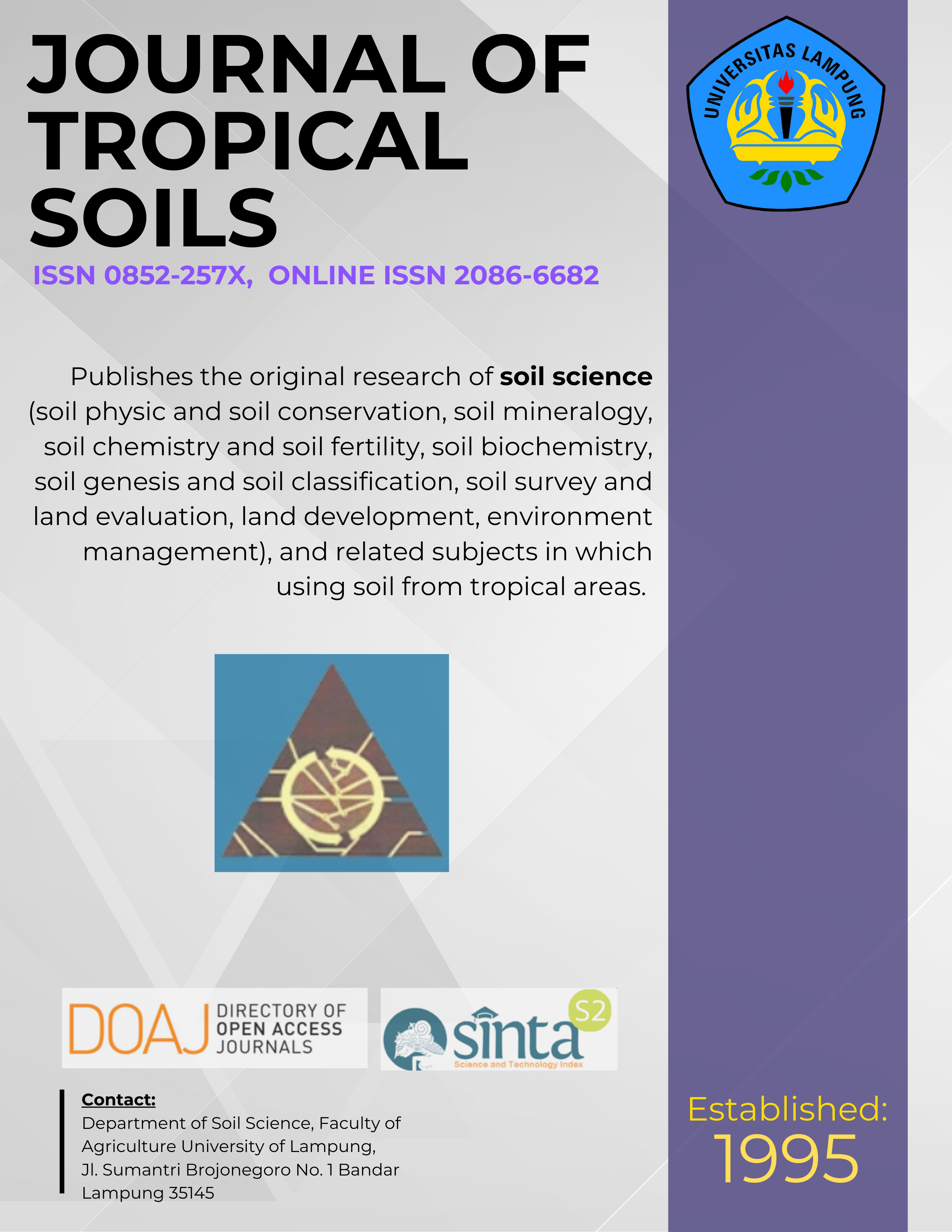Digital Analyses of Landsat ETM+ for Identify Agroforestry System in Riau
Main Article Content
Abstract
The objectives were to identify land characteristics of agroforestry system that influencing its benefit value, and to compile criteria of site specific. Location were identified by the Landsat 7 ETM+ that designed in the landuse utilization type: rubber agroforestry is identified by cyan old (RGB pixel 143,37; 173,04; 96,03) and palm oil agroforestry is identified by varying bright green-green (red-green-blue pixel 33-145; 142-253; 46-139). In each the landuse utilization type done by measurement of land characteristics, cost the inputs, and price the benefits. The maximum likelihood classification system is used for classification; the benefit value were calculated by benefit-cost ratio; the suitability criteria of site spesific were compiled by cluster analysis. The economic suitability criteria of rubber are: I (4,18-3,94); II (3,94-3,15); III (3,15-2,73); IV (2,73-2,31), the economic suitability criteria of palm oil are: I (3,30-2,72); II (2,72-2,07); III (2,07-1,38); IV (1,38-1,18), and would be base saturation, exchangeable Ca, and Mg. These criteria can be used to evaluate of suitability for the agroforestry system rubber and palm oil in Riau.
Downloads
Article Details
License for Authors
Authors who publish with this journal agree to the following terms:
- Authors retain copyright and grant the journal right of first publication with the work simultaneously licensed under a Creative Commons Attribution License that allows others to share the work with an acknowledgement of the work's authorship and initial publication in this journal.
- Authors are able to enter into separate, additional contractual arrangements for the non-exclusive distribution of the journal's published version of the work (e.g., post it to an institutional repository or publish it in a book), with an acknowledgement of its initial publication in this journal.
- Authors are permitted and encouraged to post their work online (e.g., in institutional repositories or on their website) prior to and during the submission process, as it can lead to productive exchanges, as well as earlier and greater citation of published work (See The Effect of Open Access).
License for Regular Users
Other regular users who want to cite, distribute, remix, tweak, and build upon author’s works, even for commercial purposes, should acknowledge the work’s authorship and initial publication in this journal, licensed under a Creative Commons Attribution License.

